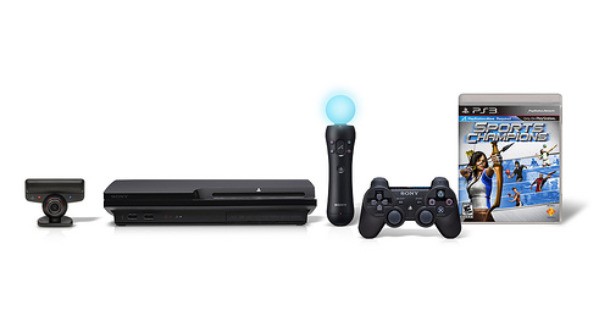Our extra-large special edition is here. Subscribe today and receive the 25% longer issue at no extra cost!
Move Hardware Review: Motion Controls Evolved

The Move motion controller is a strange-looking peripheral. Even in an era of gaming inundated with plastic musical instruments and exercise accessories, Move’s glowing sphere will probably make you feel like an idiot when you first start playing with it. Luckily, it also happens to be a responsive and accurate motion controller.
The controller’s internal sensors are as powerful as a Wii remote with Wii MotionPlus, while the mold is more comfortable in your hand. The face buttons are small, but raised enough that we never missed them while playing. Players who are accustomed to the DualShock may find Move’s button placement confusing at first, but it didn’t take us long to acclimate to the new orientation.
The battery life for the motion controller is on par with the DualShock, and withstood a full day of gaming before low battery warnings began popping up. Syncing and recharging the controllers via USB is as simple as expected, but the PlayStation Slim presents a bit of a problem. The redesigned console only has two USB ports, so if you have two motion controllers and a navigation controller, you’re already out of slots. You can’t recharge controllers while the PS3 is off, and if you want to play Move titles while charging your other controllers, keep in mind that the PlayStation Eye needs a USB port as well.
The other half of Move is the PlayStation Eye, which is slightly less impressive. It’s great that Sony was able to utilize an existing peripheral (especially if you’ve already bought the underused camera), but that also means you’re purchasing older hardware. The PlayStation Eye is almost three years old, and it shows. The 640x480 resolution looks especially grainy on HDTVs. This really only affects games that feature augmented reality though, and luckily the camera’s motion-tracking capabilities are top notch – under the right conditions.
While setting up the PlayStation Eye, we realized how much the environment can affect Move’s performance. Putting the camera on top of our television gave us fewer recognition problems than our initial placement underneath the television at about knee level. Although the PlayStation Eye can automatically adjust its exposure setting and assign a color to your controller that contrasts with the lighting of your room, the camera is still fairly sensitive. Our overhead lights were too bright for PlayStation Eye’s liking, and opening the blinds behind our television created minor problems as well. Once we struck the right balance, we didn’t have any further problems.
The last piece of Move is the navigation controller, but how it performs is still up in the air. None of the launch titles we played utilized it, making it impossible to say how it will hold up during extended gameplay sessions. The controller’s analog stick and trigger feel fine, but the two face buttons and d-pad – which are all placed under the analog stick – feel slightly awkward. The navigation controller is only $30, but there’s no reason for gamers to pick one up until we see what kind of support it gets.
Despite these minor problems, the more we played with Move the more it impressed us. The PlayStation Eye and motion controller are a killer combination for accurate and highly responsive motion-based gameplay, and we applaud Sony for getting the hardware right the first time. The quality will cost you, however: The Move bundle plus an extra motion controller (you’ll want an extra controller) will cost you $150.
Any excitement over the Move hardware must be weighed against the quality of the games that support it. As you will see from our reviews of Move’s launch titles over the next few days, the first games to utilize the new hardware have been a mixed bag. While it’s not uncommon for new hardware and peripherals to launch with less than stellar support, it’s ultimately up to Sony to prove the value of its new controller as a gaming device, and justice the hefty price tag to skeptical consumers. So far we have not seen a killer app for the PlayStation Move, but the effectiveness of the hardware has us intrigued for the peripheral’s future.


Get the Game Informer Print Edition!
Explore your favorite games in premium print format, delivered to your door.
- 10 issues per year
- Only $4.80 per issue
- Full digital magazine archive access
- Since 1991









